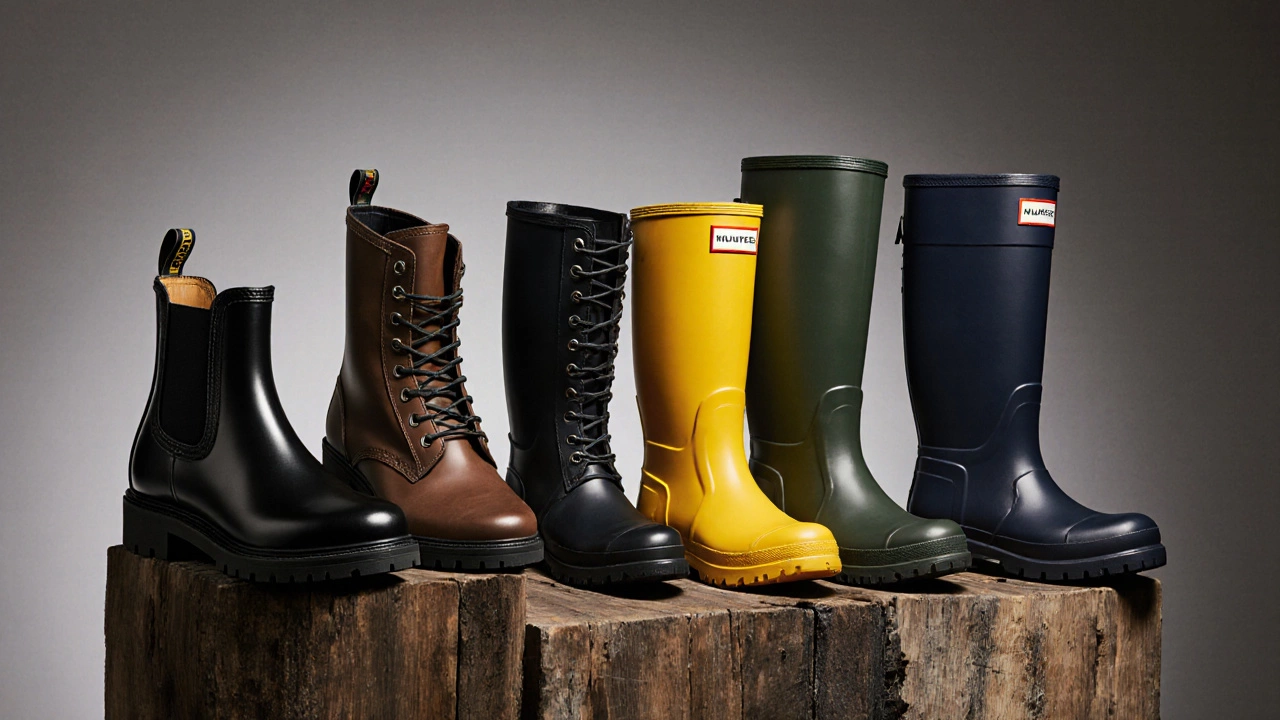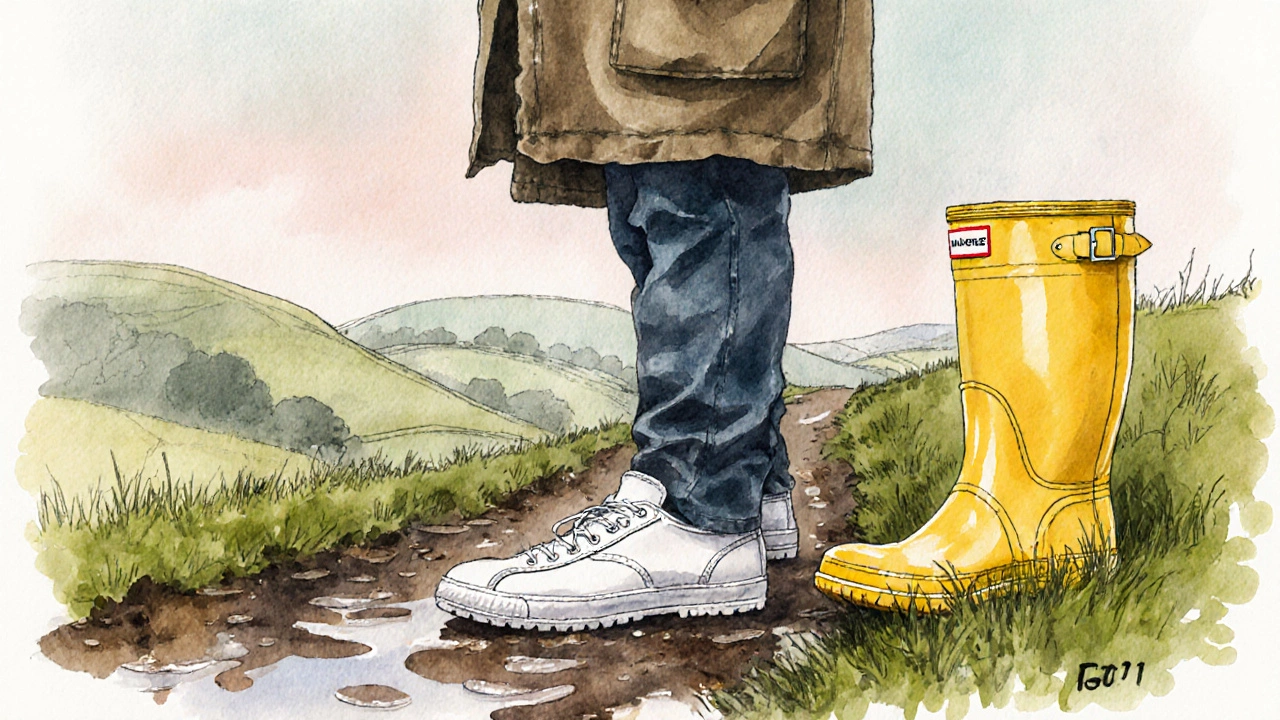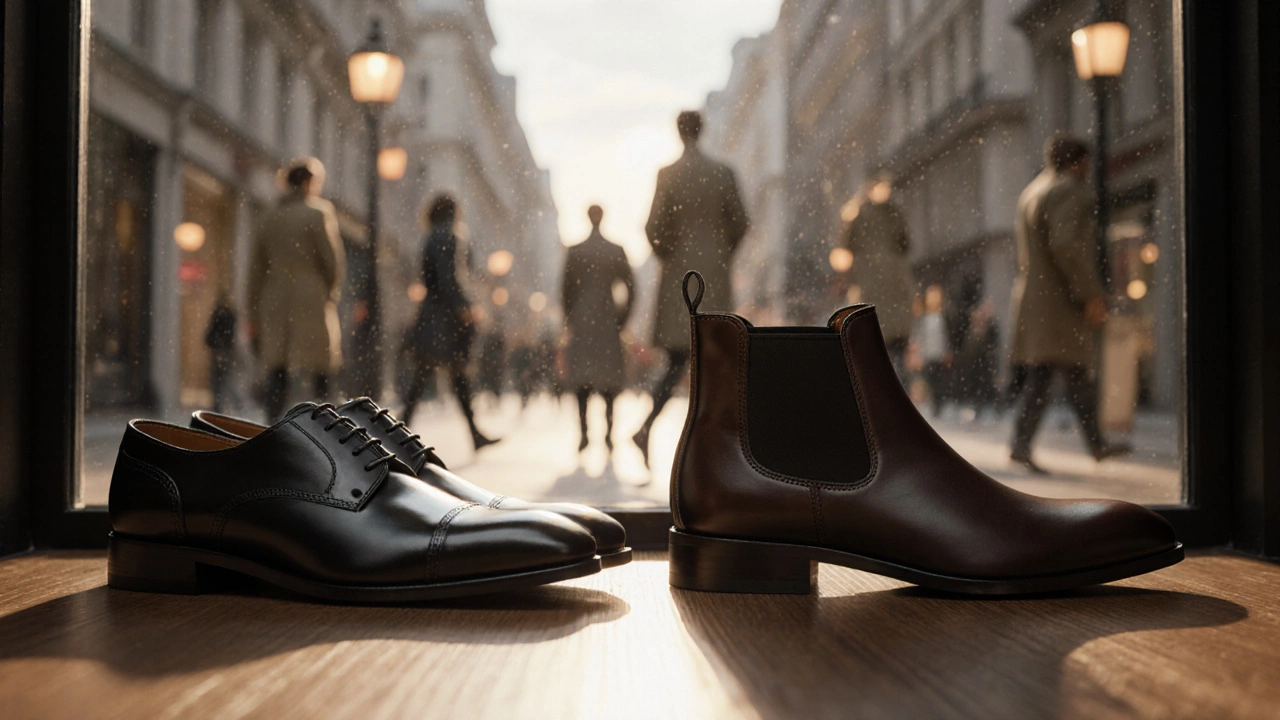British Footwear Terminology Checker
Identify British English terminology for footwear
Determine whether footwear should be called "shoes" or "boots" in British English based on height and style.
Enter details and click "Check Terminology" to see the proper British English term.
Ever wondered whether a Brit would call a pair of boots "shoes"? The answer lies in the subtle ways the UK and the US name their footwear. Below you’ll get the low‑down on the words Brits use, the types of boots you’ll hear about, and how "trainers" fit into the picture.
British footwear vocabulary at a glance
In everyday conversation, British people tend to split footwear into two broad buckets: shoes - any closed‑toed, laced or slip‑on item that sits below the ankle - and boots - anything that rises above the ankle, covering a larger part of the lower leg. The classic phrase "shoes and boots" simply means “all types of footwear.”
Boots vs. shoes: the practical distinction
When a Brit says “I need some new shoes,” they usually mean low‑cut footwear like oxfords, loafers, or brogues. If they say “I’m buying a new pair of boots,” they’re specifically looking for ankle‑high, mid‑calf or knee‑high styles. The key factor is height:
- Above the ankle → boots
- Below the ankle → shoes
That’s why a rainy‑day rubber “wellie” is called a wellie (short for Wellington boot), not a shoe, even though it’s made of the same material as many garden rain boots.
Common British boot types and what they’re called
Brits love to be specific. Here are the most frequently mentioned boot styles, each with its own nickname:
- Chelsea boots - elastic‑side ankle boots, a staple for both casual and smart outfits.
- Derby boots - a heavier cousin of the Derby shoe, with lacing that reaches the ankle.
- Combat boots - rugged, lace‑up boots originally designed for the military, now a fashion statement.
- Wellies - waterproof rubber boots for mud, rain, and farm work.
- Hunter boots - a brand‑name style of wellie that’s become generic, often seen in countryside walks.
- Ankle boots - any boot that ends just above the ankle, a casual alternative to dress shoes.
- Knee‑high boots - sleek boots that reach the knee, popular in winter.

Where do “trainers” fit in?
In the UK, the term trainers is the go‑to word for what Americans call “sneakers.” Trainers are considered a subset of shoes, not boots. You might hear phrases like “I’m buying new trainers for the gym” or “Those trainers are great for everyday wear.” The distinction matters because you wouldn’t call a pair of high‑top basketball shoes “boots,” even though they sit higher on the ankle - they’re still labelled trainers.
Side‑by‑side comparison: UK vs. US terms
| UK term | US equivalent | Typical use |
|---|---|---|
| Boots | Boots | Any footwear with ankle‑cover or higher |
| Shoes | Shoes | Low‑cut, laced or slip‑on footwear |
| Trainers | Sneakers | Sport‑style casual shoes |
| Wellies | Rain boots | Rubber waterproof boots for wet weather |
| Chelsea boots | Chelsea boots | Elastic‑side ankle boots |

Practical tips for using the right word
When you’re chatting with a Brit, keep these quick rules in mind:
- If the footwear stops below the ankle, say “shoes” (or “trainers” if they’re sporty).
- If it rises above the ankle, call them “boots” - even if the material is lightweight canvas.
- Add a qualifier for style: “Chelsea boots,” “wellies,” “combat boots.”
- Never mix “boots” with “trainers” unless you’re describing a high‑top sneaker that looks boot‑like - the speaker will still call it “trainers.”
- When in doubt, ask: “Do you mean shoes or boots?” - most Brits will appreciate the clarification.
Common pitfalls and how to avoid them
It’s easy to slip up:
- Calling wellies “shoes” - they’re always “wellies” or “rain boots.”
- Using “sneakers” in the UK - you’ll sound American; stick with “trainers.”
- Mixing “boot” with “trainer” - you’ll confuse native speakers because the height rule is clear.
By keeping the height rule front and centre, you’ll sound natural in any UK setting.
Frequently Asked Questions
Do the British ever call any boots "shoes"?
No. In British English, "shoes" always refer to footwear that stays below the ankle. Anything that rises above the ankle is a "boot," regardless of material or style.
What’s the difference between "trainers" and "sneakers"?
"Trainers" is the British term for athletic or casual low‑top shoes. "Sneakers" is the American counterpart. The items are the same; only the word changes.
Are "wellies" considered shoes?
No. "Wellies" (short for Wellington boots) are always referred to as boots. They’re waterproof rubber shoes designed for mud and rain.
Can I say "I bought new boots" when I mean "trainers"?
You’d be mistaken. Brits reserve "boots" for ankle‑high or higher footwear. If you bought a pair of athletic shoes, say "trainers" or "shoes".
What are the most popular boot styles in the UK?
Chelsea boots, wellies, combat boots, and knee‑high leather boots top the list for everyday wear, rainy‑day utility, and fashion statements.

